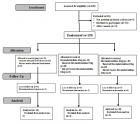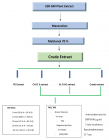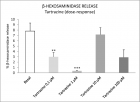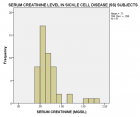Early Online (Volume - 9 | Issue - 2)
Giant Adult-onset Juvenile Xanthogranuloma in an Unusual Location
Published on: 7th July, 2025
We report the case of a 29-year-old male referred to our surgical department for evaluation of two progressively enlarging lumbar masses with an eight-month history.
Surgical Technique of Medial Collateral Ligament Repair of the Knee with Bioinductive Membrane Augmentation
Published on: 5th August, 2025
Introduction: The medial collateral ligament (MCL), a primary stabilizer against valgus forces, often requires surgical intervention in severe injuries, especially when associated with anterior cruciate ligament (ACL) tears. However, MCL repair or reconstruction is typically reserved for patients who continue to experience persistent valgus instability after nonoperative management has failed. The use of synthetic and biological implants is increasingly popular to augment these procedures, providing both biomechanical reinforcement and promoting natural healing. BioBrace, a biocomposite of collagen and bioabsorbable microfilaments, provides structural support and enhances tissue healing. This article explores the surgical treatment of high-grade medial collateral ligament (MCL) injuries of the knee using BioBrace augmentation through a case series.Methods: Cohort of patients who underwent MCL repair surgery with a bioinductive membrane augmentation (BioBrace) between December 2023 and February 2024. This article presents surgical techniques, indications, and clinical outcomes from a case series, highlighting the benefits of BioBrace augmentation in improving stability and functional recovery. Results: A total of 4 patients underwent MCL repair surgery with BioBrace. Results show that patients experienced reduced instability, faster rehabilitation, and favorable outcomes without significant postoperative complications. Conclusion: This method offers a promising alternative for patients with complex knee injuries, especially athletes, by facilitating early rehabilitation and improving joint stability. Further research is recommended to evaluate long-term efficacy and optimize the surgical approach.
Mesh-reinforced Anterior Component Separation for Repair of Large Ventral Hernia: Ten-year Experience in Multiple Centers
Published on: 12th August, 2025
Background: Repair of a large ventral hernia is a challenge for surgeons. Component Separation Technique (CST) is a novel technique for closure of the midline with live tissues without undue tension. This can further be reinforced by a prosthesis. We wanted to see the outcome of mesh-reinforced open Anterior Component Separation (ACS) for large complex ventral hernia repair. We aimed to see the duration of surgery, hospital stay, Surgical Site Occurrence (SSO), and recurrence within the first year after surgery.Materials and methods: We analyzed data of patients operated from January 2014 to January 2024 for a period of 10 years in three centers. There were 13 patients with divarication of recti without any previous surgery. Rest 44 patients had either incisional hernia or port site hernia. All patients had defect sizes more than 8 cm. Open bilateral anterior component separations were done to achieve midline closure. Medium-pore soft Prolene mesh was used to reinforce the midline closure by an on-lay technique. Patients were followed up to 1 year after surgery to assess efficacy and complications of the procedure.Results: The average operating time was 73 ± 12 min. Hospital stay was 3 to 7 days, mean was 5.3 days. Surgical site occurrence was 14%. These include seroma formation, major wound infection, and abscess formation. There was no flap necrosis nor mesh removal. There was no recurrence within one year of follow-up after surgery. Conclusion: Open mesh Anterior Component Separation (mACS) is an easy and effective way of treating large and complex ventral hernia. Operating time is substantially less than posterior component separation. Reinforcement with mesh reduces recurrence.
Primary Gluteal Hydatid Cyst: A Case Report
Published on: 22nd August, 2025
Introduction and background: Hydatid disease (HD) is a parasitic infection caused by the larval form of Echinococcus granulosus. It is endemic in regions with widespread livestock farming and close human-animal contact. Although the liver and lungs are the most frequently involved organs, rare cases of primary subcutaneous hydatid cysts have been reported, especially in the absence of visceral involvement. Gluteal localization is extremely rare and may be misdiagnosed due to its nonspecific presentation.Case presentation: We report the case of a 25-year-old woman who presented with a gradually enlarging, painless swelling over the lateral aspect of her right buttock, noted over five months. There were no systemic symptoms, and she had no history of trauma or prior medical conditions. Physical examination revealed a well-circumscribed, fluctuating, non-mobile mass measuring 5 × 4 cm with no overlying skin changes. Laboratory results were within normal limits. Ultrasound imaging revealed multiple well-defined cystic lesions in the subcutaneous tissue. Chest X-ray and abdominal ultrasound excluded hepatic or pulmonary hydatidosis. A diagnosis of primary subcutaneous hydatid cyst was made. The patient underwent pericystectomy under spinal anesthesia. Intraoperatively, typical hydatid features were noted, and the cyst cavity was thoroughly irrigated with hypertonic saline. Postoperatively, Albendazole therapy (400 mg twice daily) was administered for three months. There were no signs of recurrence during 6 months of follow-up.Discussion: Primary soft tissue hydatid cysts are rare and can mimic benign soft tissue tumors or abscesses. In endemic regions, such lesions should be carefully evaluated using imaging and clinical suspicion. The diagnosis is typically made through imaging, and definitive treatment includes surgical excision with careful handling to prevent dissemination, accompanied by pre- and postoperative anthelmintic therapy to minimize recurrence.Conclusion: This case highlights the importance of considering hydatid disease in the differential diagnosis of gluteal masses, especially in endemic areas. Prompt diagnosis and combined surgical and pharmacologic therapy can lead to excellent outcomes without recurrence.

HSPI: We're glad you're here. Please click "create a new Query" if you are a new visitor to our website and need further information from us.
If you are already a member of our network and need to keep track of any developments regarding a question you have already submitted, click "take me to my Query."



















































































































































